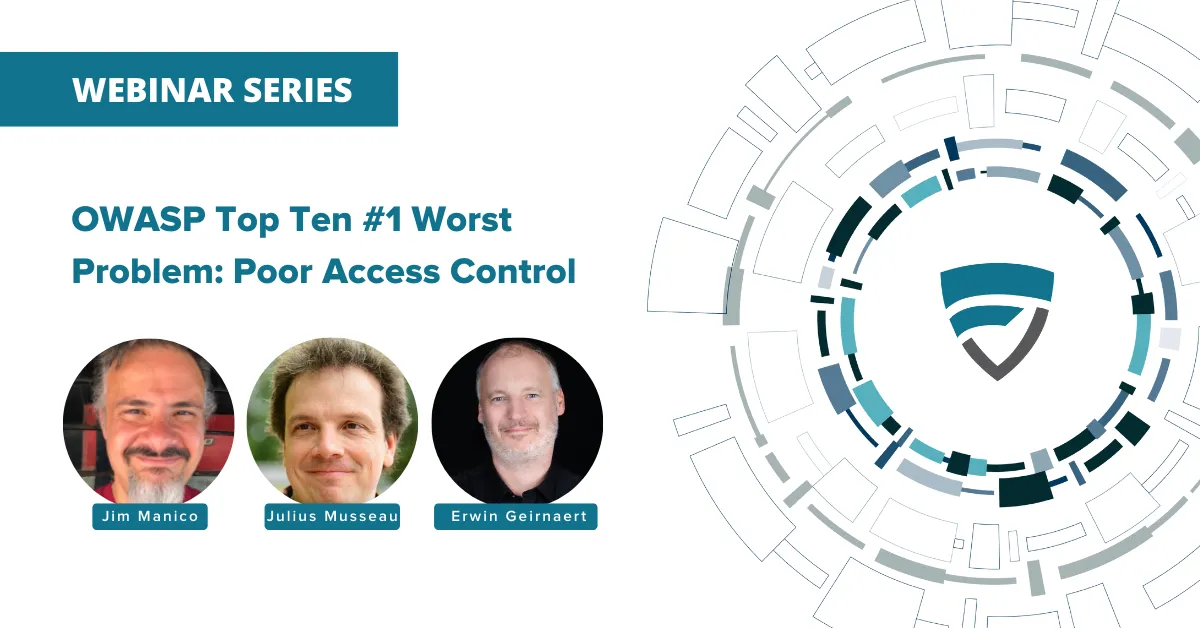How To Avoid “All Your Base Are Belong To Everyone!”
As you are probably well aware, access control is the biggest problem in Application Security. OWASP research in 2021 pointed out that access control is a major security risk, as did Verizon’s highly-regarded 2022 Data Breach Investigations Report (DIBR).
Why is this important?
The same report points out that web application attacks are the second most frequent attack pattern after DoS. So, if your organization has not been hit in this area, the odds are that it will be soon. It’s time to prepare for the inevitable and strengthen you access control models. Get ready!
The stakes are high. Poor access control can lead to data breaches, loss of customer trust, and significant financial and reputational damage. It’s a critical vulnerability that can unravel the threads of security measures painstakingly woven into an application’s fabric.
The good, the bad, and the ugly
Be warned; there are no quick fixes! No magical tools resolve this for you. Unlike installing a patch or updating a virus definition, fortifying access control is a complex, ongoing endeavor.
Developers’ first response is mostly to ignore access control as an issue and to make matters worse. Application frameworks rarely provide details about their functionality since it’s not particularly generalizable. However, there are mature and well-developed approaches to address these challenges effectively.
How mature is your DevSecOps? Take our complimentary DevSecOps Maturity Assessment to gain valuable insights into your current approaches, identify areas needing improvement, and emphasize the importance of advancing your DevSecOps maturity.
But don’t despair! Approaches to resolve this are mature and well-developed. Watch this webinar with Application Security experts Jim Manico (OWASP Top Ten contributor), Erwin Geirnaert (Co-founder & Chief Hacking Officer at Shift Left Security), and Julius Musseau (Advisor at Mergebase) to learn about guidelines, patterns, as well as pitfalls to avoid it.
What will you learn??
Addresses key questions and provides valuable insights into this critical aspect of application security:
-
Defining Access Control and Authorization: These concepts are notoriously challenging to implement correctly. Understanding their nuances is crucial for robust application security.
-
Building Blocks for Developers: Learn about the fundamental building blocks developers need to know to implement robust access control in your applications. This includes:
- Applying the principle of least privilege when building access control in your applications.
- Using appropriate data types for making access control decisions.
- Building a data-centric access control system to avoid Indirect Object Reference (IOR) issues.
- Best Protection Strategies: Explore the most effective protection strategies to prevent access control security risks. Additionally, delve into the complexities of dealing with indirect object reference. This aspect of access control focuses on data-specific access control and offers protection strategies and design principles.
So, if you want to learn more about what makes applications so vulnerable and what you can do about it, this is the webinar you won’t want to miss!
What is Access Control and Authorization?
Access control is about selectively restricting access to a piece of software, right various features, and various resource access. Authorization is when you give permission to a particular user or entity to access certain features or data again.
In other words, access control is the act of restricting access, and authorization is the act of giving someone access to a specific part of your software. They work in tandem to ensure that sensitive areas of an application are only accessible to authorized personnel, safeguarding data confidentiality and integrity.
Robust AC relies on effective authentication and authorization processes. These procedures involve verifying user credentials and ensuring that individuals have the appropriate permissions to access systems.
AC limits access to authorized users while preventing unauthorized access to secure confidential information, such as customer data.
Typical Implementation Approaches
Normally, companies use Role Based Access Control (RBAC), which is commonly implemented in web frameworks. Usually, you check in a hard-coded way what role the user is correct.
This is a policy enforcement point somewhere in the software where you can check if the user has permission to execute this feature.
However, hard coding has some problems:
- It makes “proving” the policy of an application difficult for audit or Q&A purposes.
- Any time the access control policy changes to be updated, new code needs to be pushed.
- It does not support horizontal ac.
- It is often not “automatic” and needs to be “hand-coded” for each application feature.
- It does not support multi-tenancy.
Why is it still difficult? What is the challenge?
Implementing it is complex and challenging. It involves understanding the intricacies of user roles, permissions, and the secure management of these elements.
- It is difficult for developers to build. Frameworks rarely provide detailed access control functionality.
- It is difficult to test from automated tools. Scanning tools are rarely aware of your custom access control policies.
Best Practices in Access Control:
- Implement SQL Integrated access control for robust security.
- Sequence access control steps to prioritize the protection of business-critical actions, addressing security risks proactively.
- Consider data context in access control permissions to bolster information security.
- Consider environmental conditions to enhance security. The security of an application may vary based on factors like network security, device security, and user location. Understanding and accounting for these conditions is crucial in building a comprehensive security system.
- Centralize ACL Control with solutions like (CanCanComunity) to prevent unauthorized access and enhance confidentiality.
Is your application secure?
Access control stands as a paramount issue within application security. It is incumbent upon both developers and security experts to prioritize the crafting of secure access control frameworks. Despite the complexities associated with its implementation, access control remains an indispensable facet of a secure application infrastructure.
The challenges it poses are real, but there are well-established best practices and strategies to address them. By mastering access control, you can significantly enhance your application’s security, prevent security risks, and reduce the risk of vulnerabilities and breaches.
Incorporating Mergebase for Comprehensive Security
Incorporating Mergebase into your security strategy is a step towards comprehensive application security. It doesn’t just address access control but also provides a broader view of the software supply chain, which is increasingly crucial in today’s interconnected digital landscape.
With Mergebase, you can strengthen your defense against potential security threats, safeguard your access to systems, and ensure the confidentiality of sensitive data.

